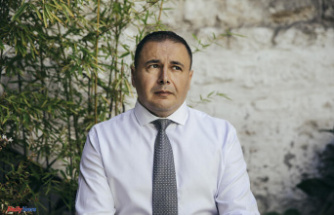In many ways, 2022 was not a year to shed any tears. There is much to suggest that 2023 can be a better year, but the uncertainties remain high. What is the optimal portfolio for this environment?
2023 will be a year with many questions and unknowns. Will the central banks' unusually restrictive monetary policy be followed by a deep recession? Or will the central banks buckle beforehand and relax the reins? Can China's attempt to end the zero-Covid policy succeed without the population being adequately vaccinated? Even the weather, especially a harsh winter, can have a significant impact on the economy.
The optimal investment strategy for the new year: When there is a high level of uncertainty, investors like to seek protection in cash and bonds. But if inflation doesn't come down to a more bearable level soon as hoped, these so-called nominal papers are certain losers.
Real assets such as stocks are likely to fare better in the inflation scenario, but then the global economy must not slip into recession, which usually plunges the stock markets into a month-long bear market, i.e. causes prices to fall. And gold has its problems when the central banks fight inflation with high interest rates. The precious metal pays neither interest nor dividends and has to compete with viable alternatives.
So what does the optimal portfolio for this environment look like? Unfortunately, "the portfolio" doesn't exist. The composition and mix of investments depends on risk appetite, wealth and marital status and one's own age. So there is no silver bullet - a portfolio is always a personal matter, so there is no one-size-fits-all solution.
But there's one simple idea that, interestingly enough, does quite well scientifically as well: the cockroach portfolio. Why cockroaches? Quite simply, cockroaches have been around for 350 million years and are considered extremely tough. Not even the ice age and meteorite impacts could harm them. A portfolio should be just as resilient.
What should a portfolio that survives ice ages and meteorite impacts look like? The recipe is simple: 1/4 in stocks, 1/4 in gold, 1/4 in government bonds and 1/4 in cash in the bank account. These four asset classes are hardly correlated with each other, they develop largely independently of each other. The bonds in the portfolio benefit from deflation in recessionary phases, while equities and gold are very likely to lose value. Conversely, equities and gold should offset the real fall in value of the nominal component (bonds and cash) during inflationary periods.
In science, this type of investing is called "1/n heuristic". A heuristic is a simple answer to a complex problem to make your life easier.
In today's situation, investors could build up their 25,000 euro portfolio as follows:
Cash: Fortunately, negative interest rates are a thing of the past. With a fixed deposit, interest rates of 1.5 to 2 percent are possible again.
Bonds: Due to the inverse yield curve, i.e. the yields are higher for short maturities than for longer ones, bonds with maturities of between one and four years and a yield of around three percent are more interesting than ten-year federal bonds with a two percent yield. If you are braver, you can also add - preferably actively - managed high-yield funds. These junk or risky bond funds yield more than 6 percent.
Gold remains a good portfolio addition, weighing in at five to ten percent. The precious metal could make a fresh start to new highs in 2023 if the seriousness of central banks' efforts to combat inflation is tested by markets. A slightly weaker US dollar can also be assumed, which should give the precious metal a tailwind.
Equities: In the short term, anything is possible here. Over the long term, it's the superior asset class that's also capable of beating inflation. Initially, however, interest rate increases are still having a negative impact, but inflation is allowing companies' sales to rise faster, at least in nominal terms, i.e. without taking inflation into account. And if companies manage to keep their profit margins stable, profits will start to climb again.
Since investments in equities should have a longer investment horizon anyway and equities are best able to defy inflation in the long term, investors should deviate from balancing the cockroach portfolio and set the equity quota to more than 50 percent. Some asset classes are more equal than others.
Marco Herrmann has been working for well-known banks and investment companies since 1992. As Managing Director, he has been responsible for FIDUKA's investment strategy since 2010.












